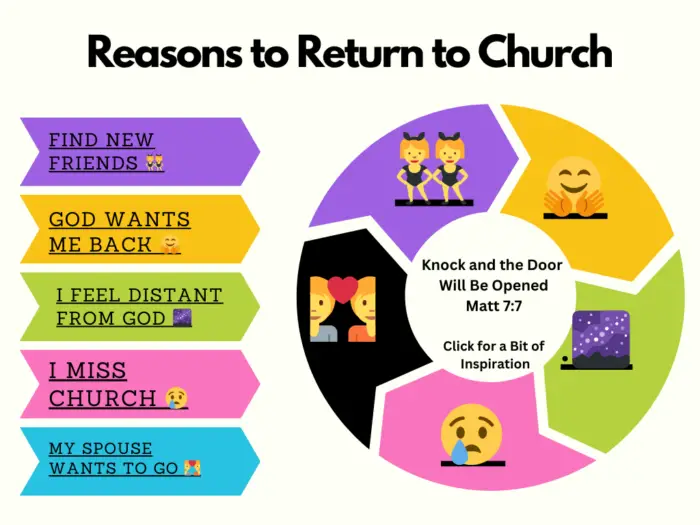Unlocking Church Growth: A Journey to Flourishing Congregations
4 Types of Church Growth – In this article, we delve into the fascinating realm of church growth, exploring the four key types that drive vibrant and flourishing congregations. With our experience, expertise, and deep understanding of this topic, we aim to provide you with valuable insights that will help your church thrive in today’s world. Whether you’re a church leader, a member, or simply curious about the dynamics of church growth, this guide is tailored to equip you with the knowledge and strategies needed to foster expansion and vitality within your community.

Table of Contents
4 Types of Church Growth
Church growth is multifaceted, encompassing various approaches that, when combined, create a robust and flourishing congregation. Let’s explore the four primary types in detail:
1. Numerical Growth: Embracing New Congregants
Numerical growth represents the increase in the total number of congregants attending your church. Embracing this type of growth involves attracting new members to your community, fostering an environment that welcomes diverse backgrounds and interests. Building an inclusive and friendly atmosphere will naturally draw individuals seeking spiritual fulfillment and meaningful connections.
2. Spiritual Growth: Nurturing Stronger Faith
Spiritual growth centers on the development and deepening of faith among your existing congregants. A thriving church encourages continuous spiritual nourishment through various means, such as engaging sermons, insightful study groups, and impactful worship experiences. By nurturing the spiritual growth of your members, your church becomes a sanctuary for personal transformation and deeper connections with the divine.

What is Vision Casting – Proverbs 29:18 says, “Where there is no vision, the people perish
Check this vision – I would follow this – Greg Gaines
3. Relational Growth: Cultivating Meaningful Connections
Relational growth revolves around fostering genuine relationships within the church community. Creating opportunities for social interaction, fellowship events, and small groups can strengthen bonds and create a sense of belonging. When congregants feel valued and connected, they are more likely to actively engage in the life of the church and support its growth.
4. Missional Growth: Impacting the World
Missional growth involves expanding the church’s impact beyond its immediate community. Engaging in outreach programs, community service, and global missions allows the church to make a positive difference in the world. As congregants witness the impact of their collective efforts, their sense of purpose and dedication to the church’s mission deepen.
FAQs (Frequently Asked Questions) 4 Types of Church Growth

- What are some practical ways to attract new members to our church? Content: Attracting new members requires a proactive approach. Consider hosting open house events, utilizing social media for outreach, and creating welcoming materials to introduce your church to potential newcomers.
- How can we ensure our existing members experience spiritual growth? Content: Foster spiritual growth by offering diverse opportunities for study, prayer, and worship. Encourage members to participate in small groups where they can engage in meaningful discussions and share their faith journey.
- What role do church leaders play in cultivating relational growth? Content: Church leaders play a pivotal role in cultivating relational growth by promoting a culture of inclusion, encouraging fellowship activities, and genuinely caring for the needs of their congregants.
- What are the benefits of engaging in mission-focused initiatives? Content: Engaging in mission-focused initiatives not only benefits the communities served but also enriches the lives of congregants. It strengthens their sense of purpose and unity, fostering a vibrant and forward-looking church.
- How can smaller churches embrace these growth types effectively? Content: Smaller churches can embrace these growth types by focusing on personalized interactions, creating intimate worship experiences, and collaborating with other churches or organizations for mission-driven endeavors.
- Can a church experience growth in more than one of these types simultaneously? Content: Absolutely! Churches can experience growth in multiple types simultaneously. In fact, the synergy of these growth types often reinforces and accelerates overall church development.
Final Thoughts – 4 Types of Church Growth
Achieving church growth is an exciting journey that requires dedication, vision, and a deep understanding of the four types that contribute to a thriving congregation. By embracing numerical growth, nurturing spiritual development, cultivating meaningful relationships, and engaging in impactful missions, your church can evolve into a vibrant and influential force within the community and beyond.
Remember, successful growth is rooted in fostering an inclusive, welcoming, and purpose-driven environment for all members to flourish and make a positive impact on the world. So, take this knowledge and embark on your church’s growth voyage with optimism and determination!
How to Offer Hope about Jesus
Full Lesson
Best Bible Encyclopedias and Dictionaries
Below is a table featuring some highly regarded Bible Encyclopedias and Dictionaries along with their publishers and websites where they can be found or purchased.
| Title | Publisher | Website |
|---|---|---|
| The International Standard Bible Encyclopedia | Eerdmans | Eerdmans |
| Zondervan’s Pictorial Bible Dictionary | Zondervan | Zondervan |
| Easton’s Bible Dictionary | Thomas Nelson | Thomas Nelson |
| Holman Illustrated Bible Dictionary | B&H Publishing Group | B&H Publishing Group |
| The New Unger’s Bible Dictionary | Moody Publishers | Moody Publishers |
| HarperCollins Bible Dictionary | HarperOne | HarperOne |
| Vine’s Complete Expository Dictionary of Old and New Testament Words | Thomas Nelson | Thomas Nelson |
You can generally find these resources on the publishers’ websites, as well as other online book retailers such as Amazon or Christianbook. It’s always good practice to confirm availability and review additional details on the specific websites or other reliable online bookstores.




